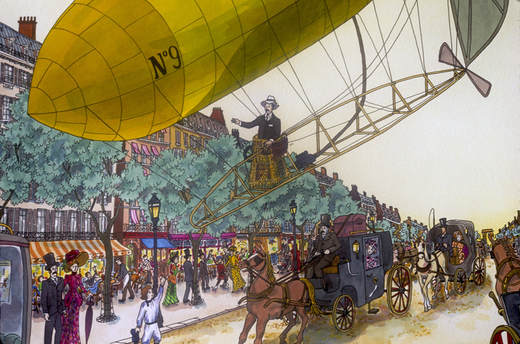 All art by Roxie Munro All art by Roxie Munro Horse-drawn carriages stopped dead in their tracks. People pointed at the sky. “Look!” they shouted. “There’s Santos in one of his flying machines!” Above, along the Champs–Elysées, sailed a strange-looking contraption: a cigar-shaped balloon under which was mounted a gasoline engine, a large propeller, and, in a wicker basket, a dapper little man with a neatly trimmed moustache, starched collar, and a Panama hat. Spotting an agreeable sidewalk café, he landed his airship and hitched it to a lamppost. Then he calmly ordered his morning cup of coffee 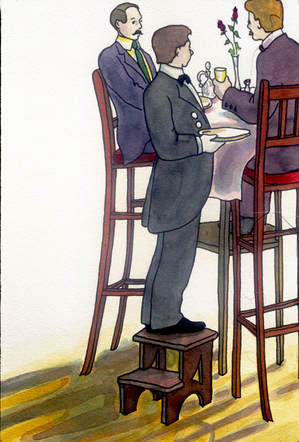 He was Alberto Santos-Dumont, a very short twenty-nine-year-old Brazilian aviator who loved everything high. (His dining table had nine-foot legs with chairs to match. To reach it, his manservant climbed a step stool.) A year earlier, in 1901, Santos had astounded Parisians with one of the most spectacular feats in early aviation history. A prize of one-hundred thousand francs had been offered to the first pilot who took off from the Paris Aero Club, circled the Eiffel Tower, and returned to the club within thirty minutes. Though the money meant little to Alberto—his father had left him with a fortune— it presented a challenge. 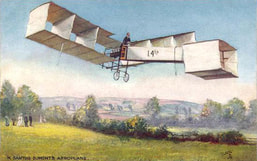 Postcard showing the 14-bis. Via Wikimedia Postcard showing the 14-bis. Via Wikimedia His first attempt failed when his 16-horsepower engine conked out, causing his dirigible to fall into a tree. On his second try, the airship crashed into a roof, and the brave Brazilian was left suspended in his basket fifty feet above the ground. His third attempt was a success. “Did I make it?” he shouted as he passed the finish line. “Oui! Oui!” spectators roared back at him, throwing handkerchiefs into the air and whirling their hats on top of their walking sticks. Flight was Alberto’s great passion. Arriving in Paris at 18, he had a balloon made— so tiny it could be packed into a travel bag, but big enough to carry his pint-size figure. Then came dirigibles —fourteen altogether. In 1906, after the Wright brother’s historic flight, he built his own airplane. Named 14 bis, it looked like a bunch of boxes haphazardly thrown together. But it flew, making him the first man in Europe to fly a heavier-than-air machine. 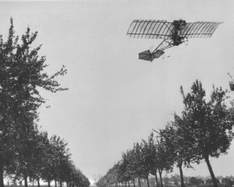 Demoiselle over Paris. Via Wikimedia Demoiselle over Paris. Via Wikimedia His final aircraft was made of bamboo, aluminum, and silk. Seeing him buzz around in it, people shouted, “Our Santos is riding a dragonfly!” And that became its name: Demoiselle (dragonfly). 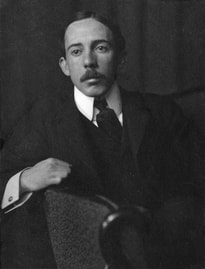 Santos-Dumont is a national hero in Brazil, where it is popularly held that he preceded the Wright brothers in demonstrating a practical airplane. Library of Congress. Santos-Dumont is a national hero in Brazil, where it is popularly held that he preceded the Wright brothers in demonstrating a practical airplane. Library of Congress. Le Petit Santos— a remarkable little man indeed. 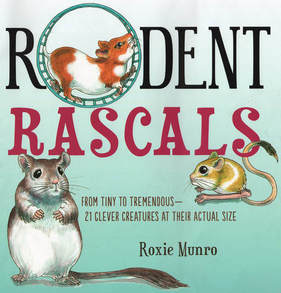 What is the smallest rodent in the world? What is the biggest? How long can rodents live? How do they find mates? In this wonderfully detailed new book from Roxie Munro, life-sized illustrations of rodent species from around the world accompany simple, thorough text describing their life cycles, sizes, habitats, and ranges. From ground hogs to guinea pigs and pygmy jerboas to capybaras, kids will learn all about the rascally rodents who share our world! Roxie's Rodent Rascals has earned starred reviews from Publisher's Weekly, Kirkus, and School Library Journal. MLA 8 Citation
Munro, Roxie. "Alberto Santos-Dumont." Nonfiction Minute, iNK Think Tank, 16 May 2018, www.nonfictionminute.org/the-nonfiction-minute/Alberto-Santos-Dumont.
0 Comments
The great Paris tower was underway. From each corner of a broad base the size of a football field, four spidery iron structures rose, curving inward in one majestic sweep toward the middle. The construction – a web of connecting girders – called for 300 workers to assemble some 15,000 pieces of iron and snap 2.5 million rivets into place. This would be the world’s tallest man-made structure, reaching a height of 300 meters (934 feet). A glorious demonstration of engineering, it was conceived by Gustave Eiffel, the most illustrious engineer of nineteenth-century France. The tower was to be the focal point of the International Exhibition of Paris in 1889, commemorating the 100th birthday of the French Revolution. After that, since it had no practical use, it was to be torn down. It took two years, two months, and three days to build the Eiffel Tower. Eiffel used wrought iron, which was a relatively new building material at the time, used primarily for bridges and aqueducts. As the tower rose, becoming the city’s most prominent feature, not everyone approved. “Useless and monstrous,” one newspaper called it. Another described it as an “odious column of bolted metal.” Called the Magician of Iron, Eiffel’s mathematical prowess and attention to detail was legendary. To put the tower project on paper took 30 draftsmen working full time for 18 months. Every rivet of the 2.5 million needed for the structure had its designated place, down to a fraction of a millimeter. The Tower became the hit of the International Exhibition, with nearly two million people visiting it. Still, not everyone loved this prodigious web of steel girders. A famous writer was once asked why he ate lunch there every day, since he was known to hate the sight of it. He replied, “Because it’s the only place in Paris where I can’t see the damn thing.” So why wasn’t the Eiffel Tower torn down? It almost was. What saved it was the radio broadcasting center and the weather station that Eiffel installed at the top. Now France’s most famous landmark, it is not the only national symbol that Eiffel was involved with. He also built the iron skeleton of a lady we’re all familiar with: The Statue of Liberty. As for the Eiffel Tower, “I ought to be jealous of that tower,” he once said. “She is more famous than I am.” The Eiffel Tower under construction highlights the intricacy of the design as well as the massive size of the project in relation to the city of Paris. Art by Roxie Munro Eiffel's most famous works are still major tourist attractions in the 21st century. The Eiffel Tower is the most-visited paid monument in the world. An average of 25,000 people ascend the tower every day. Approximately four million people visit New York's Statue of Liberty National Monument and Ellis Island each year. Photo Benh Lieu Song viia Wikimedia Commons. Art by Roxie Munro  One of Roxie's most recent, Masterpiece Mix, is a book about art. As an artist searches for inspiration, she explores thirty-seven paintings of different genres, and comes up with a grand finale, using all of them. The book has "smart, concise, marvelously amplifying backmatter" (Kirkus), a dedicated web page, and free downloads. MLA 8 Citation
Munro, Roxie. "The Magician of Iron." Nonfiction Minute, iNK Think Tank, 7 Mar. 2018, www.nonfictionminute.org/the-nonfiction-minute/The-Magician-of-Iron. |
*NEWS
|
For Vicki Cobb's BLOG (nonfiction book reviews, info on education, more), click here: Vicki's Blog
The NCSS-CBC Notable Social Studies Committee is pleased to inform you
that 30 People Who Changed the World has been selected for Notable Social Studies Trade Books for Young People 2018, a cooperative project of the National Council for the Social Studies (NCSS) & the Children’s Book Council
Categories
All
Abolitionists
Adams Janus
Adaptation
Adaptations
Adkins Jan
Advertising
Aerodynamics
Africa
African American History
African Americans
Africa West
Agriculture
Aircraft
Air Pilots
Air Pressure
Air Travel
Albee Sarah
Alchemy
Alligators
Allusion
American History
American Icons
Amphibians
Amundsen Roald
Anatomy
Ancient
Ancient Cultures
Anderson Marian 1897-1993
Animal Behavior
Animal Experimentation
Animal Intelligence
Animals
Animation
Antarctica
Ants
Apache Indians
Apes
April Fool's Day
Architecture
Argument
Arithmetic
Art
Art Deco
Artists
Arts
Asia
Astronauts
Astronomy
Athletes
Atomic Theory
Audubon Societies
Authors
Autobiography
Automobiles
Aviation
Awards
Bacteria
Baseball
Battuta Ibn
Bears
Beatles
Beavers
Bees
Biodegradation
Biography
Biology
Biomes
Biomimicry
Biplanes
Birds
Black Death
Black History
Blindness
Blizzards
Bombs
Bonaparte Napoleon
Boone Daniel
Botany
Brazil
Bridges
Brill Marlene Targ
Brooklyn Bridge
Brown John
Buffaloes
Building Materials
Butterflies
Caesar
Caesar Julius
Caissons
Calculus
Calendars
Cannibal
Capitals
Caravaggio
Carbon Dioxide
Carnivores
Carson Mary Kay
Cartoons & Comics
Carving (Decorative Arts)
Cascade Range
Castaldo Nancy
Castles
Castrovilla Selene
Cathedrals
Cats
Caves
Celts
Cemeteries
Chemistry
Children's Authors
Child Welfare
China
Choctaw Indians
Christmas
Chronometers
Cicadas
Cinco De Mayo
Ciphers
Circle
Citizenship
Civil Rights
Civil Rights Movements
Civil War
Civil War - US
Climate
Climate Change
Clocks And Watches
Clouds
Cobb Vicki
COBOL (Computer Language)
Code And Cipher Stories
Collard III Sneed B.
Collectors And Collecting
Color
Commerce
Communication
Competition
Compilers
Composers
Computers
Congressional Gold Medal
Consitution
Contests
Contraltos
Coolidge Calvin
Cooling
Corms
Corn
Counterfeiters
Covid-19
Crocodiles
Cryptography
Culture
Darwin Charles
Declaration Of Independence
Decomposition
Decompression Sickness
Deep-sea Animals
Deer
De Medici Catherine
Design
Detectives
Dickens Charles
Disasters
Discrimination
Diseases
Disney Walt
DNA
Dogs
Dollar
Dolphins
Douglass Frederick 1818-1895
Droughts
Dr. Suess
Dunphy Madeleine
Ear
Earth
Earthquakes
Ecology
Economics
Ecosystem
Edison Thomas A
Education
Egypt
Eiffel-gustave-18321923
Eiffel-tower
Einstein-albert
Elephants
Elk
Emancipationproclamation
Endangered Species
Endangered-species
Energy
Engineering
England
Englishlanguage-arts
Entomology
Environmental-protection
Environmental-science
Equinox
Erie-canal
Etymology
Europe
European-history
Evolution
Experiments
Explorers
Explosions
Exports
Extinction
Extinction-biology
Eye
Fairs
Fawkes-guy
Federalgovernment
Film
Fires
Fishes
Flight
Floods
Flowers
Flute
Food
Food-chains
Foodpreservation
Foodsupply
Food-supply
Football
Forceandenergy
Force-and-energy
Forensicscienceandmedicine
Forensic Science And Medicine
Fossils
Foundlings
France
Francoprussian-war
Freedom
Freedomofspeech
French-revolution
Friction
Frogs
Frontier
Frontier-and-pioneer-life
Frozenfoods
Fugitiveslaves
Fultonrobert
Galapagos-islands
Galleys
Gametheory
Gaudi-antoni-18521926
Gender
Generals
Genes
Genetics
Geography
Geology
Geometry
Geysers
Ghosts
Giraffe
Glaciers
Glaucoma
Gliders-aeronautics
Global-warming
Gods-goddesses
Gold-mines-and-mining
Government
Grant-ulysses-s
Grasshoppers
Gravity
Great-britain
Great-depression
Greece
Greek-letters
Greenberg Jan
Hair
Halloween
Handel-george-frederic
Harness Cheryl
Harrison-john-16931776
Health-wellness
Hearing
Hearing-aids
Hearst-william-randolph
Henry-iv-king-of-england
Herbivores
Hip Hop
History
History-19th-century
History-france
History-world
Hitler-adolph
Hoaxes
Holidays
Hollihan Kerrie Logan
Homestead-law
Hopper-grace
Horses
Hot Air Balloons
Hot-air-balloons
Housing
Huguenots
Human Body
Hurricanes
Ice
Icebergs
Illustration
Imagery
Imhotep
Imperialism
Indian-code-talkers
Indonesia
Industrialization
Industrial-revolution
Inquisition
Insects
Insulation
Intelligence
Interstatecommerce
Interviewing
Inventions
Inventors
Irrational-numbers
Irrigation
Islands
Jacksonandrew
Jazz
Jeffersonthomas
Jefferson-thomas
Jemisonmae
Jenkins-steve
Jet-stream
Johnsonlyndonb
Jokes
Journalism
Keeling-charles-d
Kennedyjohnf
Kenya
Kidnapping
Kingmartinlutherjr19291968
Kingmartinlutherjr19291968d6528702d6
Kings-and-rulers
Kings Queens
Kings-queens
Koala
Labor
Labor Policy
Lafayette Marie Joseph Paul Yves Roch Gilbert Du Motier Marquis De 17571834
Landscapes
Languages-and-culture
Law-enforcement
Layfayette
Levers
Levinson Cynthia
Lewis And Clark Expedition (1804-1806)
Lewis Edmonia
Liberty
Lift (Aerodynamics)
Light
Lindbergh Charles
Liszt Franz
Literary Devices
Literature
Lizards
Longitude
Louis XIV King Of France
Lumber
Lunar Calendar
Lynching
Macaws
Madison-dolley
Madison-james
Madison-james
Mammals
Maneta-norman
Maneta-norman
Marathon-greece
Marine-biology
Marine-biology
Marines
Marsupials
Martial-arts
Marx-trish
Mass
Massachusetts-maritime-academy
Mass-media
Mastodons
Mathematics
May-day
Mcclafferty-carla-killough
Mcclafferty-carla-killough
Mckinley-william
Measurement
Mechanics
Media-literacy
Media-literacy
Medicine
Memoir
Memorial-day
Metaphor
Meteorology
Mexico
Mickey-mouse
Microscopy
Middle-west
Migration
Military
Miners
Mississippi
Molasses
Monarchy
Monsters
Montgomery
Montgomery-bus-boycott-19551956
Montgomery-heather-l
Monuments
Moon
Moran-thomas
Morsecode
Morsesamuel
Moss-marissa
Moss-marissa
Motion
Motion-pictures
Mummies
Munro-roxie
Munro-roxie
Musclestrength
Museums
Music
Muslims
Mythologygreek
Nanofibers
Nanotechnology
Nathan-amy
Nathan-amy
Nationalfootballleague
Nationalparksandreserves
Nativeamericans
Native-americans
Native-americans
Naturalhistory
Naturalists
Nature
Nauticalcharts
Nauticalinstruments
Navajoindians
Navigation
Navy
Ncaafootball
Nervoussystem
Newdeal19331939
Newman-aline
Newman-aline
Newton-isaac
New-york-city
Nobelprizewinners
Nomads
Nonfictionnarrative
Nutrition
Nylon
Nymphs-insects
Oaths Of Office
Occupations
Ocean
Ocean-liners
Olympics
Omnivores
Optics
Origami
Origin
Orphans
Ottomanempire
Painters
Painting
Paleontology
Pandemic
Paper-airplanes
Parksrosa19132005
Parrots
Passiveresistance
Patent Dorothy Hinshaw
Peerreview
Penguins
Persistence
Personalnarrative
Personification
Pets
Photography
Physics
Pi
Pigeons
Pilots
Pinkertonallan
Pirates
Plague
Plains
Plainsindians
Planets
Plantbreeding
Plants
Plastics
Poaching
Poetry
Poisons
Poland
Police
Political-parties
Pollen
Pollution
Polo-marco
Populism
Portraits
Predation
Predators
Presidentialmedaloffreedom
Presidents
Prey
Prey-predators
Prey-predators
Prime-meridian
Pringle Laurence
Prohibition
Proteins
Protestandsocialmovements
Protestants
Protestsongs
Punishment
Pyramids
Questioning
Radio
Railroad
Rainforests
Rappaport-doreen
Ratio
Reading
Realism
Recipes
Recycling
Refrigerators
Reich-susanna
Religion
Renaissance
Reproduction
Reptiles
Reservoirs
Rheumatoidarthritis
Rhythm-and-blues-music
Rice
Rivers
Roaringtwenties
Roosevelteleanor
Rooseveltfranklind
Roosevelt-franklin-d
Roosevelt-theodore
Running
Russia
Safety
Sanitation
Schwartz David M
Science
Scientificmethod
Scientists
Scottrobert
Sculpture
Sculpturegardens
Sea-level
Seals
Seals-animals
Secretariesofstate
Secretservice
Seeds
Segregation
Segregationineducation
Sensessensation
September11terroristattacks2001
Seuss
Sextant
Shackletonernest
Shawneeindians
Ships
Shortstories
Silkworms
Simple-machines
Singers
Siy Alexandra
Slavery
Smuggling
Snakes
Socialchange
Social-change
Socialjustice
Social-justice
Socialstudies
Social-studies
Social-studies
Sodhouses
Solarsystem
Sound
Southeast-asia
Soybean
Space Travelers
Spain
Speech
Speed
Spiders
Spies
Spiritualssongs
Sports
Sports-history
Sports-science
Spring
Squirrels
Statue-of-liberty
STEM
Storms
Strategy
Sugar
Sumatra
Summer
Superbowl
Surgery
Survival
Swanson-jennifer
Swinburne Stephen R.
Synthetic-drugs
Taiwan
Tardigrada
Tasmania
Tasmanian Devil
Tasmanian-devil
Technology
Tecumsehshawneechief
Telegraph-wireless
Temperature
Tennis
Terrorism
Thomas Peggy
Thompson Laurie Ann
Time
Titanic
Tombs
Tortoises
Towle Sarah
Transcontinental-flights
Transportation
Travel
Trees
Trung Sisters Rebellion
Tundra
Turnips
Turtles
Typhoons
Underground Railroad
Us-environmental-protection-agency
Us History
Us-history
Ushistoryrevolution
Us History Revolution
Us-history-war-of-1812
Us Presidents
Ussupremecourtlandmarkcases
Vacations
Vaccines
Vangoghvincent
Vegetables
Venom
Vietnam
Viruses
Visual-literacy
Volcanoes
Voting-rghts
War
Warne-kate
Warren Andrea
Washington-dc
Washington George
Water
Water-currents
Wax-figures
Weapons
Weather
Weatherford Carole Boston
Whiting Jim
Wildfires
Winds
Windsor-castle
Wolves
Woman In History
Women
Women Airforce Service Pilots
Women-airforce-service-pilots
Womeninhistory
Women In History
Women-in-science
Women's History
Womens-roles-through-history
Wonder
Woodson-carter-godwin-18751950
World-war-i
World War Ii
World-war-ii
Wright Brothers
Writing
Writing-skills
Wwi
Xrays
Yellowstone-national-park
Zaunders Bo
ArchivesMarch 2021
February 2021
January 2021
December 2020
November 2020
October 2020
September 2020
June 2020
May 2020
April 2020
March 2020
February 2020
January 2020
December 2019
October 2019
September 2019
August 2019
July 2019
May 2019
April 2019
March 2019
February 2019
January 2019
December 2018
November 2018
September 2018
June 2018
May 2018
April 2018
March 2018
February 2018
January 2018
December 2017
November 2017
October 2017
September 2017
March 2017
The NONFICTION MINUTE, Authors on Call, and. the iNK Books & Media Store are divisions of iNK THINK TANK INC.
a 501 (c) (3) nonprofit corporation. To return to the iNK Think Tank landing page click the icon or the link below. :
http://inkthinktank.org/
For more information or support, contact thoughts@inkthinktank.org
For Privacy Policy, go to
Privacy Policy
© COPYRIGHT the Nonfiction Minute 2020.
ALL RIGHTS RESERVED.
This site uses cookies to personalize your experience, analyze site usage, and offer tailored promotions. www.youronlinechoices.eu
Remind me later
Archives
March 2023
February 2023
January 2023
December 2022
November 2022
October 2022
September 2022
June 2022
May 2022
April 2022
March 2022
February 2022
January 2022
December 2021
November 2021
September 2021
April 2021
March 2021
February 2021
November 2020
October 2020
September 2020
June 2020
May 2020
April 2020
March 2020
February 2020
January 2020
October 2019
August 2019
July 2019
May 2019
April 2019
December 2018
September 2018
June 2018
May 2018
March 2018
February 2018
January 2018
December 2017
November 2017
October 2017
September 2017








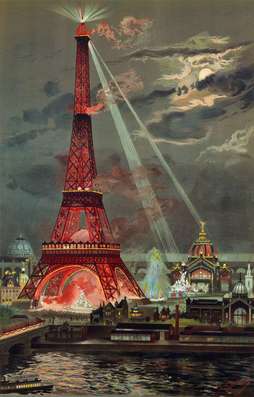
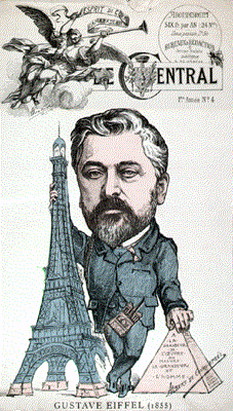
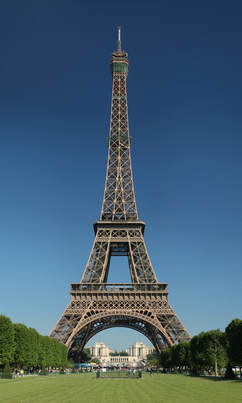
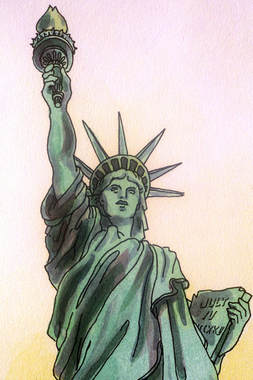

 RSS Feed
RSS Feed
